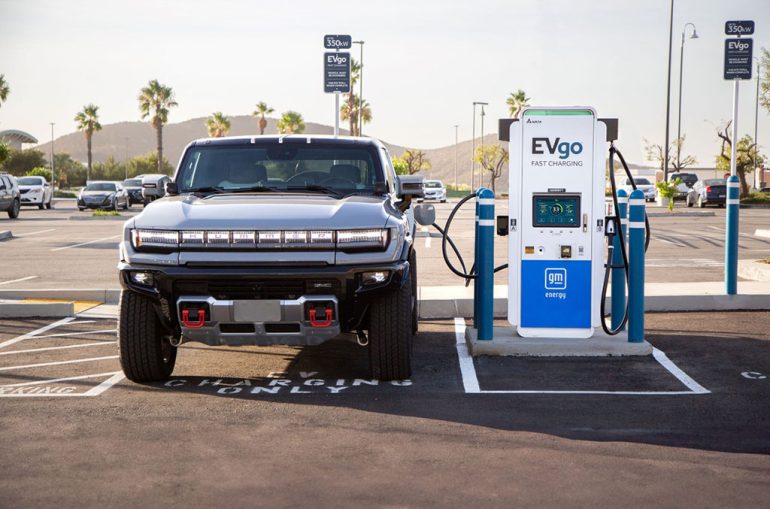
GM’s Electric Future Faces a Major Test As Trump Targets EVSubsidies – Automotive Addicts
General motors is on a mission to double its electric vehicle market share in the United States to 12% by the fourth quarter 2024. GM’s growing battery-powered lineup is proving that it can compete with Tesla. But as political winds shift, the automaker’s EV ambitions could face a major roadblock–former President Donald Trump’s proposed rollback of EV subsidies if he wins the 2024 election.
GM’s EV Surge: A Hard-Earned Victory
GM’s recent success in EV sales isn’t just luck. The company’s electric lineup has been expanded to include everything from the affordable Chevrolet Equinox Electric Vehicle (EV) to premium models such as the Cadillac Lyriq. The broader range of electric models has allowed the automaker to attract customers who might otherwise have stuck with gas-powered models. EV versions were also available for the Chevrolet Equinox, Blazer, and Blazer XL. These EV models accounted respectively for 22% and 44% of their total fourth-quarter sales. By comparison, Tesla continues to dominate with a 44.4% share of the U.S. EV market, but GM is proving that variety matters in winning over customers.
Industry analysts credit GM’s momentum to a mix of competitive pricing, leasing incentives, and the simple fact that its lineup now includes 10 EVs, giving buyers more options than many competitors. Ford and Toyota, by contrast, have leaned into hybrids, a strategy that has paid off as many consumers remain hesitant about full electrification.
The $7,500 Question – Will GM Hold Up Without Subsidies?
One of the key drivers of GM’s recent EV sales has been generous incentives, particularly the $7,500 federal EV tax credit. This subsidy has made EV leases especially attractive, with many GM dealers reporting that over half of their electric vehicle transactions come through leasing.
Trump has made it clear that, if re-elected, he intends to eliminate EV subsidies and could even impose a 25% tariff on vehicles imported from Mexico–where GM builds the Blazer EV and Equinox EV. If these policies are implemented, GM’s EV sales will be severely affected. You don’t buy.” It could cut EV price to maintain competition, but this would increase pressure on profitability. This is already a concern with the transition to electric cars. GM has yet to confirm whether it would lower prices if the tax credits disappear.
GM’s Biggest Hurdle to an EV Future
GM’s long-term vision is an all-electric lineup by 2035, but its biggest moneymaker–full-size trucks and SUVs–remains a major obstacle. Silverado EV is finally on the market but its high price has caused it to be a slow seller. GM only delivered 9,000 electric trucks in 2024 compared to the nearly 900,000.00 gas-powered Silverados and Sierras. The cost of EV pickups is high because they require large batteries in order to reach a competitive range. But the reality is clear: the transition to electric trucks is going to take longer than expected, and GM will need to find ways to maintain its dominance in the highly profitable full-size truck market while making EVs a viable alternative.
Will GM Stick With EVs or Pivot to Hybrids?
Unlike Ford and Toyota, GM has largely resisted the hybrid route, instead betting big on pure EVs. Ford’s hybrid sales have soared, up by 40% in 2023. Toyota has a hybrid strategy that continues to be successful with hybrids accounting for 40% of their U.S. sales. CEO Mary Barra recently dismissed hybrids as an “interim solution,” arguing that GM’s resources are better spent on full EV development rather than dual-powertrain vehicles.
Some analysts, however, believe that GM’s reluctance to embrace hybrids could cost it in the short term. David Whiston is an automotive stock analyst at Morningstar Research. He said that it would be difficult for GM compete with Toyota on hybrids. GM’s EV push could be made or broken in 2025.
GM has a broader range, a refined production strategy and strong lease incentives to help it achieve EV success.
With a broader line-up, a refined production strategy and strong leasing incentives, GM is well on its way to EV success. But 2025 will be the true test of whether its electric ambitions can hold up under new political and market realities.


